Abstract
The cyclohexane triones are a novel group of synthetic antibacterial agents that are active against gram-positive bacteria, Haemophilus influenzae, and Mycobacterium smegmatis. In general, these compounds behaved in a manner similar to that of hexachlorophene, inhibiting the transport of low-molecular-weight hydrophilic substances into bacteria. Unlike cationic detergents, such as chlorhexidine, they did not cause disruption of the bacterial cytoplasmic membrane over a short time period. The most potent antibacterial cyclohexane trione studied had a reduced ability to inhibit solute transport in comparison with certain less active analogs. Cyclohexane triones may express more than a single type of antibacterial effect.
Full text
PDF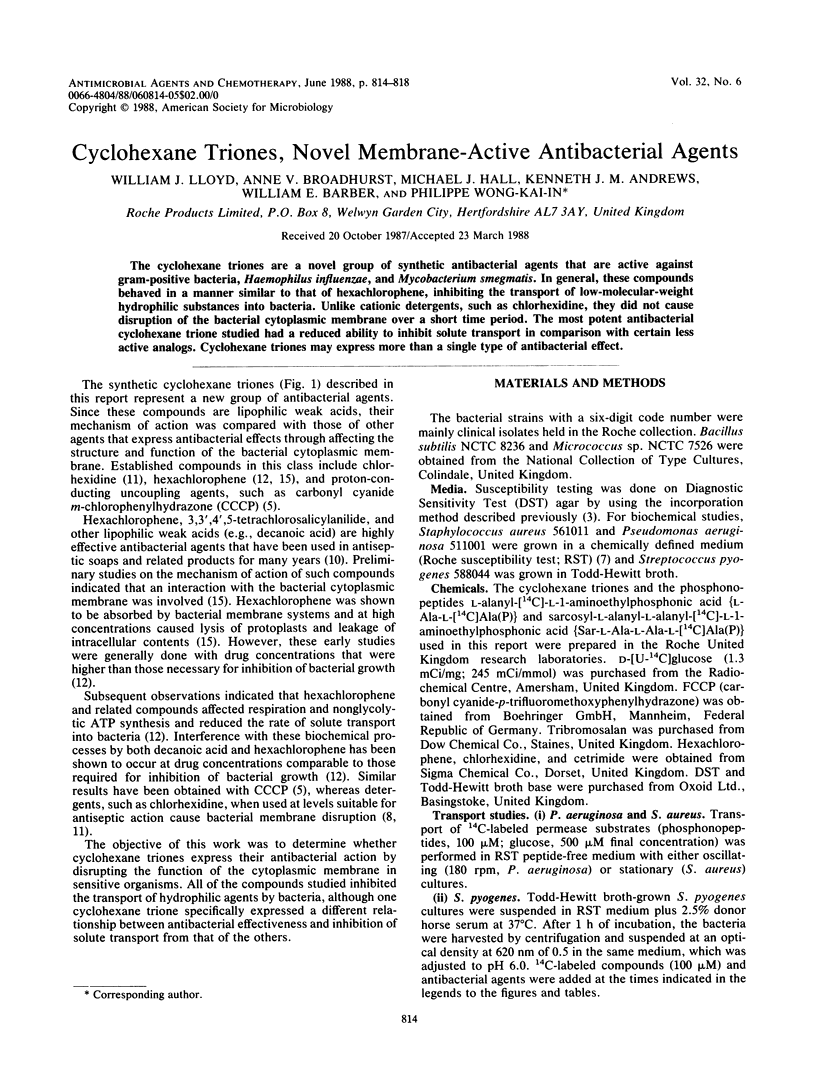
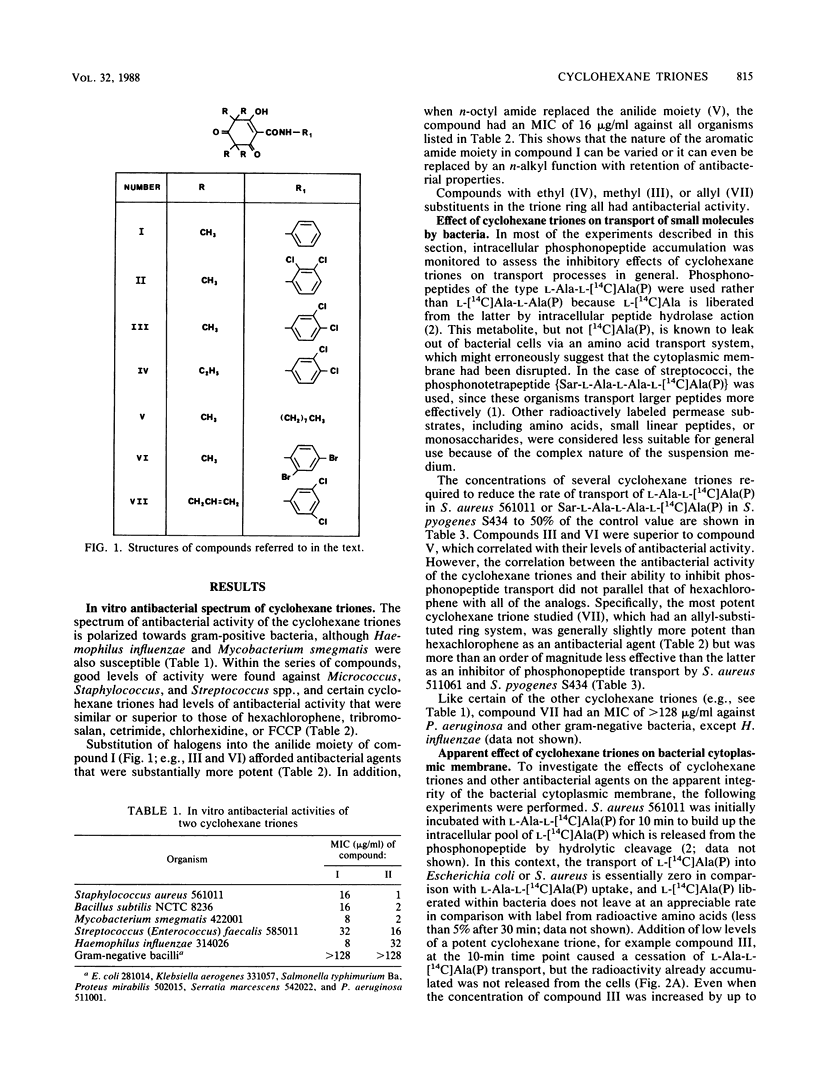
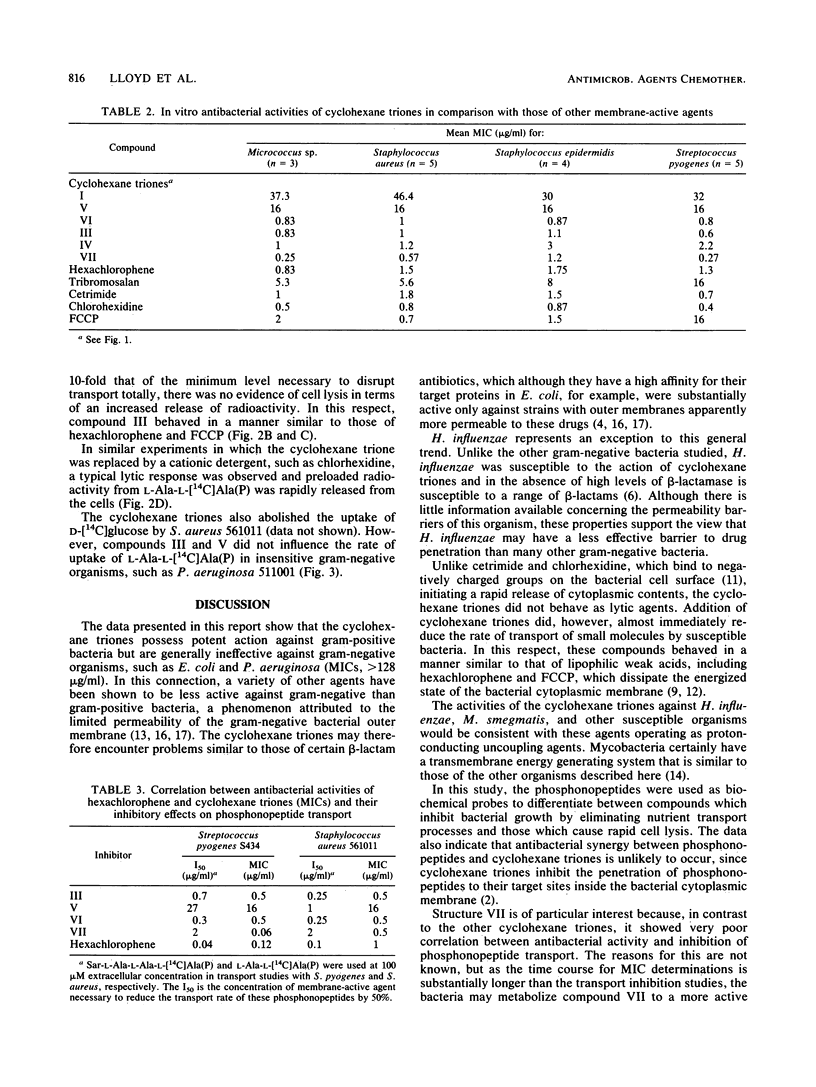
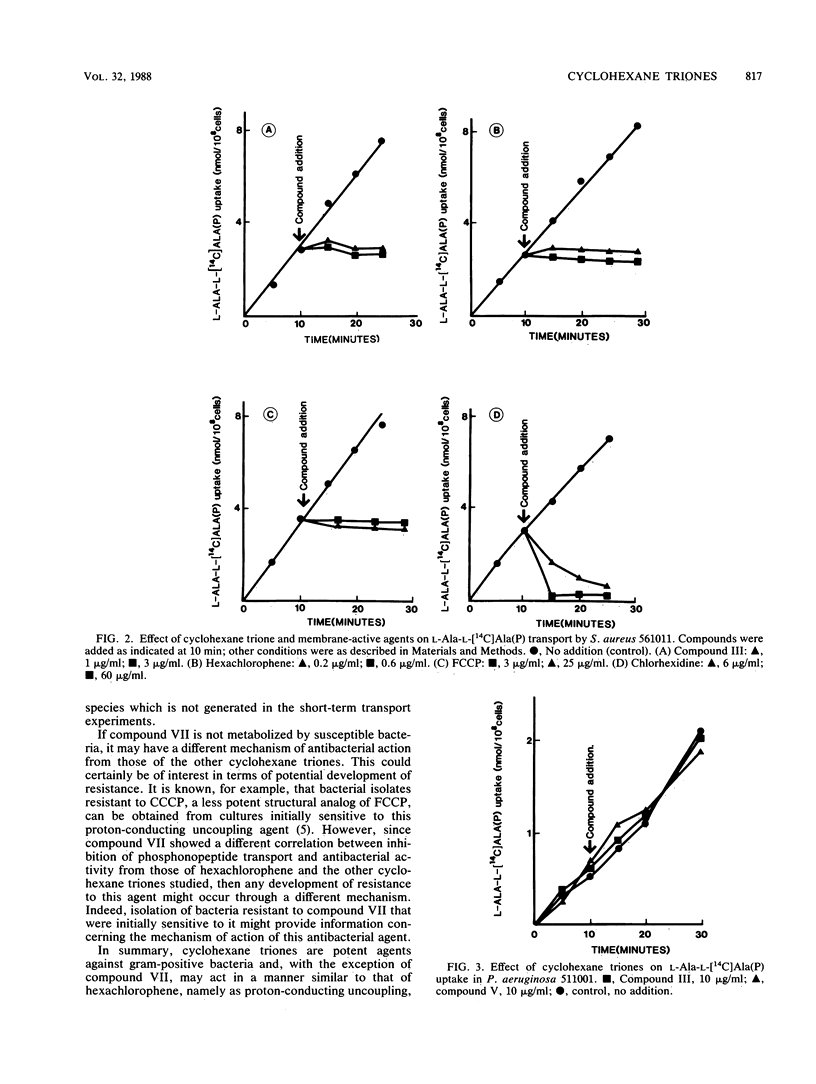
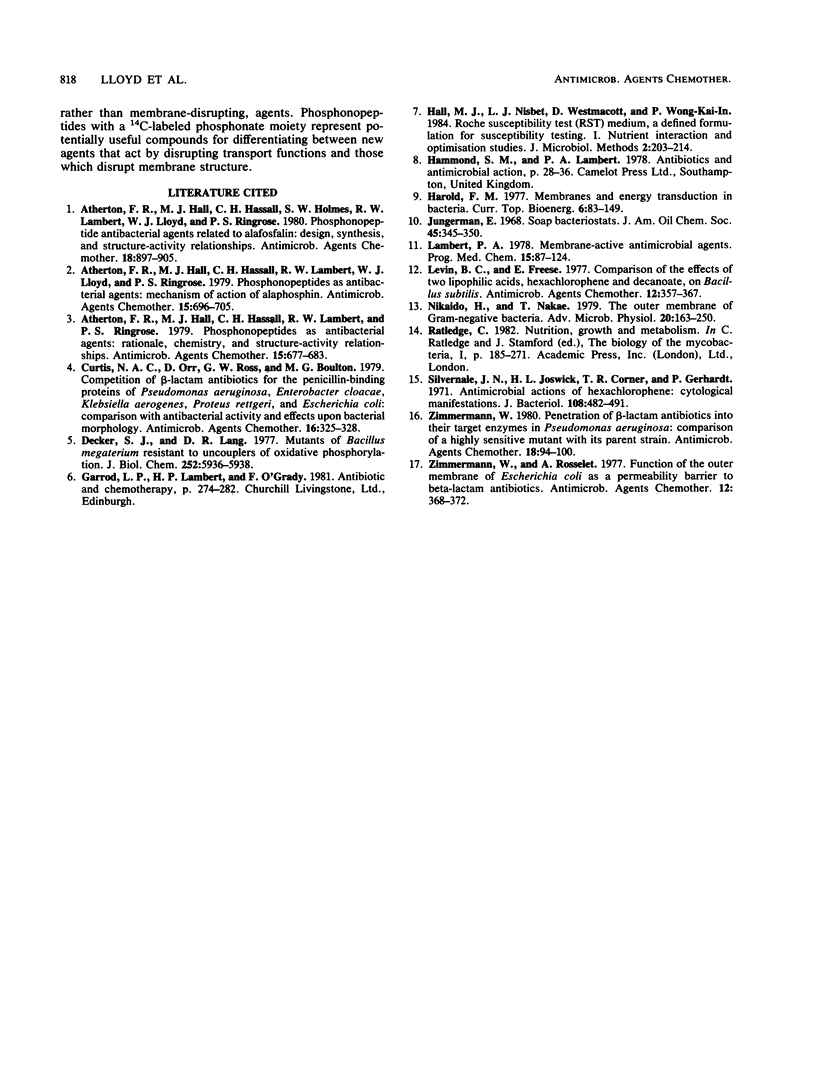
Selected References
These references are in PubMed. This may not be the complete list of references from this article.
- Atherton F. R., Hall M. J., Hassall C. H., Holmes S. W., Lambert R. W., Lloyd W. J., Ringrose P. S. Phosphonopeptide antibacterial agents related to alafosfalin: design, synthesis, and structure-activity relationships. Antimicrob Agents Chemother. 1980 Dec;18(6):897–905. doi: 10.1128/aac.18.6.897. [DOI] [PMC free article] [PubMed] [Google Scholar]
- Atherton F. R., Hall M. J., Hassall C. H., Lambert R. W., Lloyd W. J., Ringrose P. S. Phosphonopeptides as antibacterial agents: mechanism of action of alaphosphin. Antimicrob Agents Chemother. 1979 May;15(5):696–705. doi: 10.1128/aac.15.5.696. [DOI] [PMC free article] [PubMed] [Google Scholar]
- Atherton F. R., Hall M. J., Hassall C. H., Lambert R. W., Ringrose P. S. Phosphonopeptides as antibacterial agents: rationale, chemistry, and structure-activity relationships. Antimicrob Agents Chemother. 1979 May;15(5):677–683. doi: 10.1128/aac.15.5.677. [DOI] [PMC free article] [PubMed] [Google Scholar]
- Curtis N. A., Orr D., Ross G. W., Boulton M. G. Competition of beta-lactam antibiotics for the penicillin-binding proteins of Pseudomonas aeruginosa, Enterobacter cloacae, Klebsiella aerogenes, Proteus rettgeri, and Escherichia coli: comparison with antibacterial activity and effects upon bacterial morphology. Antimicrob Agents Chemother. 1979 Sep;16(3):325–328. doi: 10.1128/aac.16.3.325. [DOI] [PMC free article] [PubMed] [Google Scholar]
- Decker S. J., Lang D. R. Mutants of Bacillus megaterium resistant to uncouplers of oxidative phosphorylation. J Biol Chem. 1977 Sep 10;252(17):5936–5938. [PubMed] [Google Scholar]
- Jungermann E. Soap bacteriostats. J Am Oil Chem Soc. 1968 May;45(5):345–350. doi: 10.1007/BF02667108. [DOI] [PubMed] [Google Scholar]
- Lambert P. A. Membrane-active antimicrobial agents. Prog Med Chem. 1978;15:87–124. doi: 10.1016/s0079-6468(08)70254-6. [DOI] [PubMed] [Google Scholar]
- Levin B. C., Freese E. Comparison of the effects of two lipophilic acids, hexachlorophene and decanoate, on Bacillus subtilis. Antimicrob Agents Chemother. 1977 Sep;12(3):357–367. doi: 10.1128/aac.12.3.357. [DOI] [PMC free article] [PubMed] [Google Scholar]
- Nikaido H., Nakae T. The outer membrane of Gram-negative bacteria. Adv Microb Physiol. 1979;20:163–250. doi: 10.1016/s0065-2911(08)60208-8. [DOI] [PubMed] [Google Scholar]
- Silvernale J. N., Joswick H. L., Corner T. R., Gerhardt P. Antimicrobial actions of hexachlorophene: cytological manifestations. J Bacteriol. 1971 Oct;108(1):482–491. doi: 10.1128/jb.108.1.482-491.1971. [DOI] [PMC free article] [PubMed] [Google Scholar]
- Zimmermann W. Penetration of beta-lactam antibiotics into their target enzymes in Pseudomonas aeruginosa: comparison of a highly sensitive mutant with its parent strain. Antimicrob Agents Chemother. 1980 Jul;18(1):94–100. doi: 10.1128/aac.18.1.94. [DOI] [PMC free article] [PubMed] [Google Scholar]
- Zimmermann W., Rosselet A. Function of the outer membrane of Escherichia coli as a permeability barrier to beta-lactam antibiotics. Antimicrob Agents Chemother. 1977 Sep;12(3):368–372. doi: 10.1128/aac.12.3.368. [DOI] [PMC free article] [PubMed] [Google Scholar]


